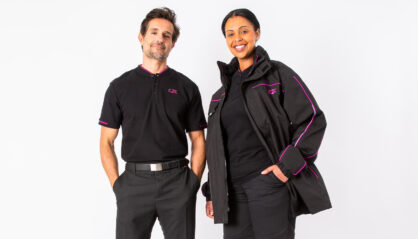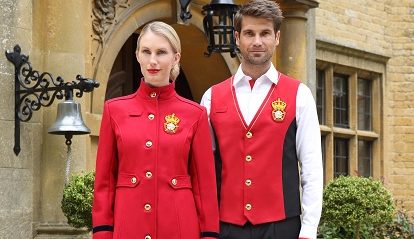Can Workwear Promote Unity and Equality at the Workplace?

Workwear follows a long history. The Victorian era was defined by boiler suits and aprons. During the 19th century, male professionals sported a classic suit and tie look, while dresses and skirts were a staple look for women. Later, fashion really did come through the workplace with the iconic Chanel suit and the jeans and denim jacket trend.
Today, different sectors demand tailored uniforms, which are gender-neutral, casual, and a snug fit.
Workwear has the power to foster unity and equality at the workplace because it offers safety, boosts employee productivity, and promotes your brand. We explore how workwear can enhance team spirit and minimise peer judgement.
Team spirit leads the way
Team spirit is key to any flourishing business. It creates an efficient workflow, the right representation of the brand, and a sense of community. When applying for a job, candidates are often asked to describe a situation where they have worked in a team.
A top priority for employers is teamwork. As such, they are looking at ways to cultivate team spirit and increase productivity. One such tool is unified clothing. A uniform can bolster the sense of belonging within an organisation. This is evident in the way an employee communicates the brand message to customers and stakeholders.
Sports teams are a great example of how team spirit feeds into their overall success. The team members all wear the same uniform to differentiate themselves from their competitors. A team uniform also helps the players to orient themselves within the game. Not only that, but their unity is so contagious that fans are ready to show their own support and appreciation for the team. They do this by spending money on branded team clothing.
Similarly, workwear fosters a connection between employees. This is especially relevant for bigger and franchise organisations where it’s difficult for all employees to bond.
One prime example is delivery drivers. Since they’re not bound to one workplace, they often remain in the shadows. But, their delivery driver uniform makes them easily recognisable anywhere. in their delivery driver uniform. This can stimulate communication amongst employees and turn them into proud brand ambassadors.
Equality and inclusivity at the forefront
In this day and age, equality at the workplace is of extreme importance. A uniform is vital in the efforts to reinforce this. Unified clothing brings people to the same level regardless of their position, gender, or race.
Sadly, gender inequality is yet another issue that is in dire need of being addressed. We tend to think that it’s been buried in the past, but that’s not the case. The “trolley-dolly culture”, for example, still exists at airline companies. A report by GMB Union shows that female air hostesses are expected to wear lipstick, make-up, and high heels by their employers.
A quarter of women claim that they’ve been subject to derogatory comments about their look at work, a Totaljobs survey shows. It also indicated that they feel pressure from male management to dress a certain way.
So, what’s causing these issues? It’s either the lack of workwear or the presence of an overly sexualized one.
With that, employers are compelled to address gender inequality issues and come up with solutions. This can be done by providing gender-neutral workwear, allowing free choice of items rather than having gender-specific items, or by ensuring that workwear is designed to fit across all genders. Industries that require personal protective equipment (PPE) are already making leaps towards being more gender inclusive, with fits, lengths, and product choices to accommodate the different shapes and sizes of the wearers, rather than the traditional “UNISEX” male fit.
Until recently, workwear options for women have been either very limited or downsized male PPE. Now, manufacturers are introducing more PPE which is specifically designed for women. Ann Dowdeswell, Sales and Marketing Director at Jermyn Street Design, a global specialist in corporate clothing, commented: “Workwear is an integral part of a company’s ethos. It not only promotes team spirit and unity but can also position the employer as an equality and diversity advocate. In traditionally male-dominated sectors, such as construction, logistics, or engineering, a well-designed uniform can be a demonstrable means to help encourage diversity. These businesses will be at the forefront in the next few years. They will be attracting the best talent and expanding their community of dedicated employees.”
But inequality stretched beyond gender. Racial and social inequality are also pressing issues alleviated by workwear. By unifying the way employees are dressed, they’re not being judged based on their wealth and class. In return, employees are happier and companies can reap the benefits of increased employee productivity.
Brands can really reap the benefits of workwear. It has the power to boost employee productivity, efficiency, and overall satisfaction. Uniforms have one precise purpose – to unify people – and that can be achieved through promoting team spirit and equality.
Sources
https://opensourcedworkplace.com/news/6-ways-protective-workwear-benefits-your-organization
https://www.independent.co.uk/news/uk/home-news/airport-workers-sexism-heels-makeup-gmb-union-report-a9022011.html
https://www.totaljobs.com/advice/dress-code-equality-is-it-time-for-an-equal-opportunities-dress-code
https://news.hica.com.au/its-official-happy-employees-are-better-employees/?q=health-insurance-news/its-official-happy-employees-are-better-employees





